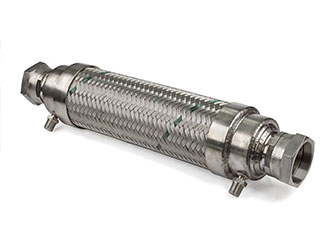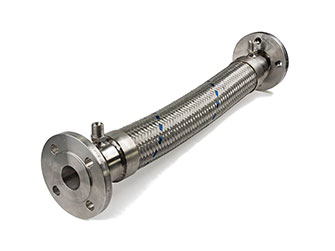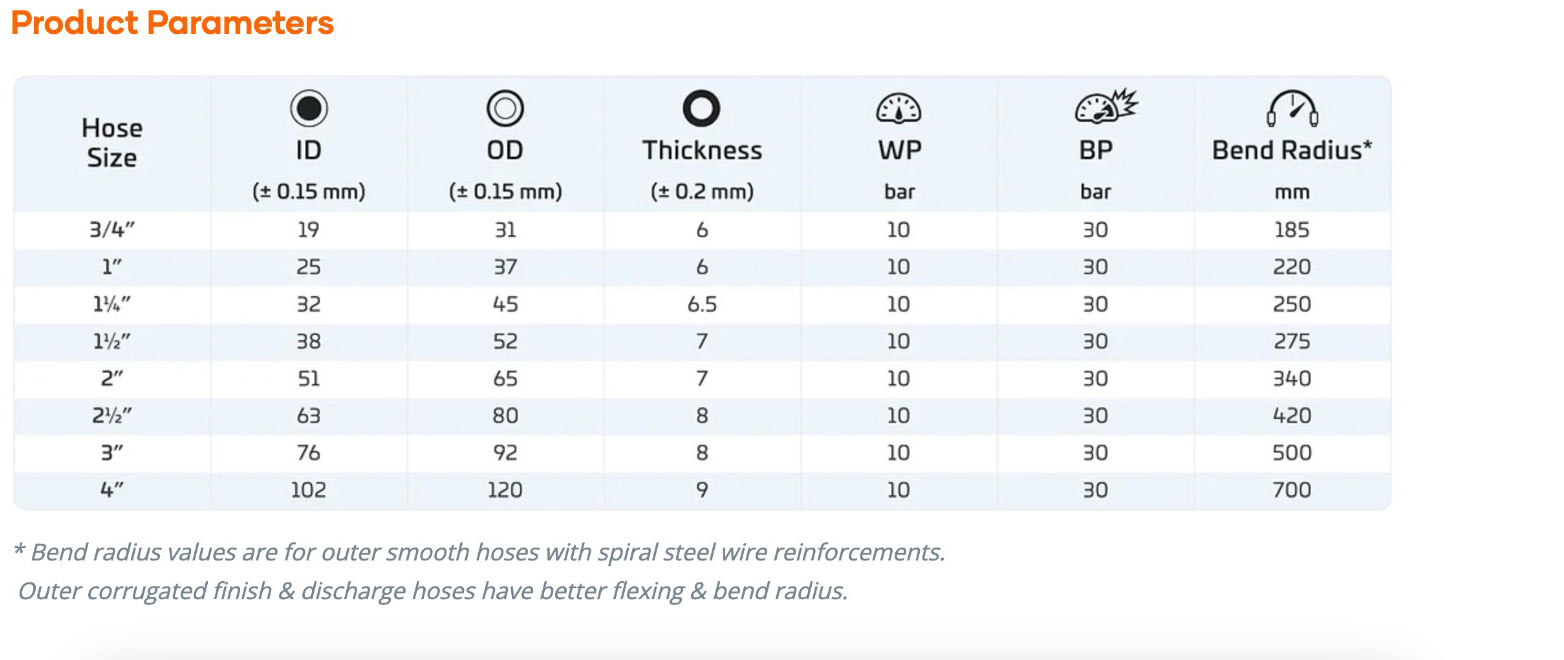- Home
- Products
- Industries
- Company
- Contact Us
- Home
- Products
- Industries
- Company
- Contact Us
Jacketed Hose assembly
Jacketed Hose assembly consists of a “hose within a hose.” An inner (Core Hose) or primary media conveying hose is enclosed or jacketed by a larger diameter hose. The hoses are joined at each end by specially designed fittings so that there is no media pathway between the two hoses.
Jacketed Hose assemblies are often specified when the primary media must be kept at either an elevated or cryogenic temperature. Steam is often circulated through the jacket hose to keep a viscous material in the inner hose hot and easily conveyed. A vacuum can also be pulled on the jacket hose to insulate cryogenic liquids being conveyed in the inner hose.
The media typically is steam, hot oil or hot water to raise the temperature of the fluid moved in the internal hose. Also cold products such as liquid helium or nitrogen can be used to lower the temperature of the fluid with-in the internal hose.

Construction
| Core & Jacket | : | SS304/304L/316/316L/321 |
| Braid Material | : | SS304/304L/316/316L |
| Operating Temperature | : | 400°C max. (600° C is possible as a special design). |
Application

- Bitumen
- Chocolate
- Heavy Fuel Oil
- Phthalic acid
- Explosive (TNT)
- Sulphur
- Organic liquified materials
- Chlorophenol
- Synthetic resin
- Phenol
- Polyester
- Mercury
- Tar
- Dimethyl Terephthalate [DMT]
- Fats
- Naphthol
- Naphthalene
- Fatty acids
- Paraffin
- Waxes & Others
- Thermosetting plastics

These are helically wound, strip wound hoses with or without packing of asbestos yarn, copper wire etc. Depending interlock upon the application. These are manufactured S-304 and G.I. in all sizes from 4mm ID to 300mm ID. These are supplied complete with end fittings/flanges as per the customers requirement.
These are also supplied with external PVC extruded cover. These are used for engine exhaust applications, liquid handing applications, solid handing applications including suction/blower hose and also for covering corrugated type SS hoses and cables/wires for protection against external abuse.
requirements.


